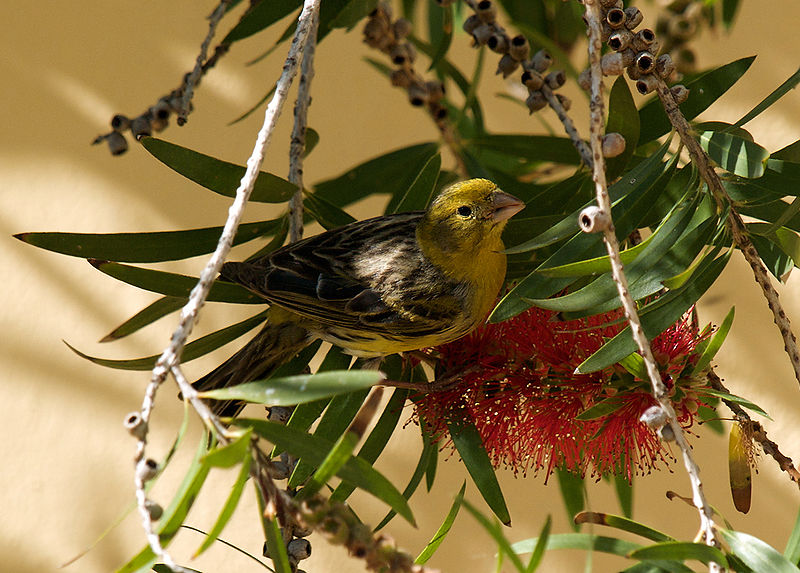 With their calm dispositions, bright colors and cheerful songs, canaries seem extremely well suited to domestic life. Indeed, they are our most popular songbird…but the history of their entry into our lives is steeped in drama.
With their calm dispositions, bright colors and cheerful songs, canaries seem extremely well suited to domestic life. Indeed, they are our most popular songbird…but the history of their entry into our lives is steeped in drama.
Canaries in the Wild
Wild canaries differ greatly from those we are accustomed to seeing, being clad in a rather plain greenish-brown. For such a cosmopolitan bird, they have an extremely small natural range, being found only on the Canary Islands, Madeira and the Azores, about 360 miles off Africa’s northwestern coast. A large introduced population also thrives on Bermuda, off the coast of North Carolina.
Early History as Pets
Canaries were being kept as pets by people native to Madeira when the ancient Romans first stumbled upon the island. They christened Madeira and/or the nearby islands Canaria insula. “Canaria” (Canis=dog) was a reference to the island’s free-ranging endemic dogs, a large, aggressive race which is believed to have been the forebears of the present day presa canario breed.
Spain took possession of the islands in the late 1400’s and, in 1478, took some canaries (the birds were named after the island, and not vice-versa) back to Europe. The Spaniards jealously guarded the prized songsters, breeding them but selling only males.
A Shipwreck Fosters a Cage Bird Sensation
In the mid 1500’s a Spanish ship carrying canaries in its cargo ran aground on Italy’s Elba Island. The birds escaped and established residence on the island. This delighted the enterprising Italians, who captured some and, unlike the Spaniards, began selling them to all comers. The French and the Dutch soon became noted canary breeders, but it was the Germans who really took the hobby to new heights. Soon, many regions in Germany were producing strains of canaries that differed greatly in color, feather structure and singing abilities.
You can read more about the history of Germany’s famed Harz Roller Canary and other varieties at:
http://www.harzer-roller.com/eng/harzroller.htm
 Different Canary varieties (termed “types”) first developed quite by accident. Canaries arrived in Europe in 1478, when they were taken to Spain from their native habitat on several islands off Northwest Africa. As the Spanish sold only males and travel was difficult, Canary owners usually bred related birds to one another. This increased the likelihood of mutations, including the yellow coloring that is now considered to be the Canary’s “normal” color (wild Canaries are actually greenish-brown). Read More »
Different Canary varieties (termed “types”) first developed quite by accident. Canaries arrived in Europe in 1478, when they were taken to Spain from their native habitat on several islands off Northwest Africa. As the Spanish sold only males and travel was difficult, Canary owners usually bred related birds to one another. This increased the likelihood of mutations, including the yellow coloring that is now considered to be the Canary’s “normal” color (wild Canaries are actually greenish-brown). Read More » That Bird Blog – Bird Care and History for Pet Birds
That Bird Blog – Bird Care and History for Pet Birds

 With their calm dispositions, bright colors and cheerful songs, canaries seem extremely well suited to domestic life. Indeed, they are our most popular songbird…but the history of their entry into our lives is steeped in drama.
With their calm dispositions, bright colors and cheerful songs, canaries seem extremely well suited to domestic life. Indeed, they are our most popular songbird…but the history of their entry into our lives is steeped in drama.